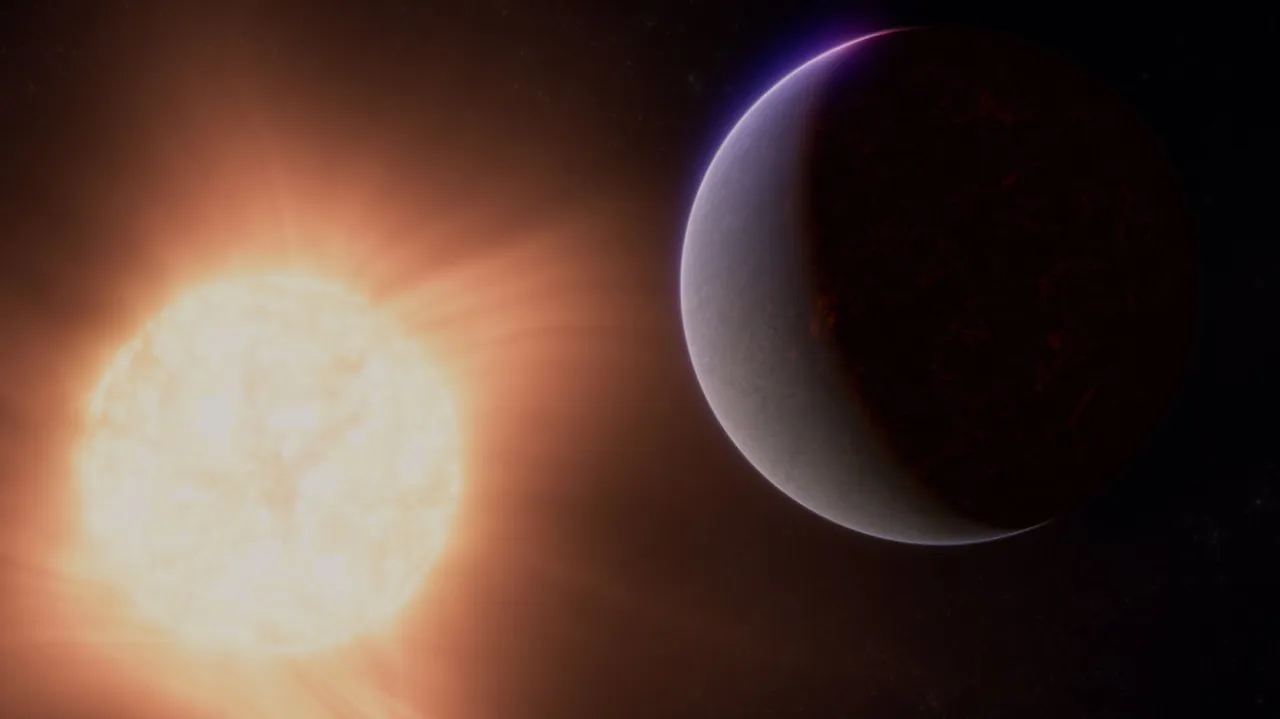Researchers may have detected atmosphere surrounding hot rocky planet 41 light-years from Earth

- Country:
- United States
NASA's James Webb Space Telescope(JWST) has potentially discovered the presence of atmospheric gases surrounding 55 Cancri e - a hot, rocky exoplanet located 41 light-years away from Earth. This is the most compelling evidence so far of a rocky planet's atmosphere outside of our solar system.
Discovered in 2011, 55 Cancri e is one of five known planets orbiting the Sun-like star 55 Cancri, in the constellation Cancer. While the planet is too hot to be habitable, detecting its atmosphere could provide insights into the early conditions of Earth, Venus, and Mars, the researchers say.
Unlike gas giant planets, it's been difficult to detect the thinner and denser atmospheres surrounding rocky planets.
Previous studies of the exoplanet 55 Cancri e, based on data from NASA's Spitzer Space Telescope, suggested the presence of a significant atmosphere rich in volatile molecules such as oxygen, nitrogen, and carbon dioxide. However, researchers were unable to exclude another possibility: that the planet might be barren, except for a sparse veil of vaporized rock which would be abundant in elements such as silicon, iron, aluminium, and calcium.
To distinguish between these two possibilities, the researchers used Webb's NIRCam (Near-Infrared Camera) and MIRI (Mid-Infrared Instrument) to measure 4- to 12-micron infrared light coming from 55 Cancri e.
Data from MIRI shows the decrease in brightness of the 55 Cancri system as the rocky planet moves behind the star, a phenomenon called a secondary eclipse. The data indicates that the planet's dayside temperature is about 2,800 degrees Fahrenheit.
A thermal emission spectrum of the exoplanet captured by Webb's NIRCam instrument, GRISM Spectrometer, and MIRI Low-Resolution Spectrometer shows that the planet may be surrounded by an atmosphere rich in carbon dioxide or carbon monoxide and other volatiles.
The team believes that the gases covering 55 Cancri e are likely to be emanating from the interior, rather than having been present since the planet's formation.
"Ultimately, we want to understand what conditions make it possible for a rocky planet to sustain a gas-rich atmosphere: a key ingredient for a habitable planet," says Renyu Hu from NASA's Jet Propulsion Laboratory in Southern California, who is the lead author on a paper published in Nature.
Researchers using @NASAWebb may have found atmospheric gases surrounding a rocky—though likely molten—exoplanet 41 light-years away: the best evidence yet of a rocky planet atmosphere outside of our solar system. https://t.co/lGLOmYH2AL pic.twitter.com/1HWbvLevzG
— NASA (@NASA) May 8, 2024










